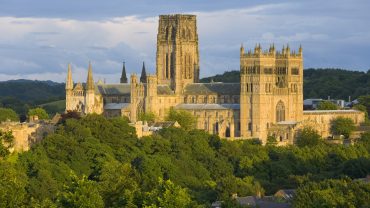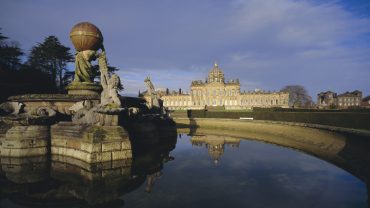Derbyshire is a county that wears its history with pride, combining the rugged beauty of the Peak District with some of England’s most iconic stately homes, which are as much a part of the landscape as the rolling countryside. These historic houses in Derbyshire aren’t just some of the most astounding in the county, they rank among some of the most impressive and important in the whole of the British Isles.
From medieval strongholds to opulent Elizabethan mansions, the stately homes in Derbyshire reflect centuries of ambition, style and creativity. Some remain in the hands of the families who built them, while others have become iconic cultural landmarks. If the walls could talk, you’d hear tales of grand banquets, royal visits, family legends and the occasional scandal!
The best stately homes to visit in Derbyshire offer a wonderful mix of history, art, and incredible gardens, so whether you’re drawn in by world-famous mansions or quirky ruins, one thing’s for sure – Derbyshire does grandeur like nowhere else.
Chatsworth House
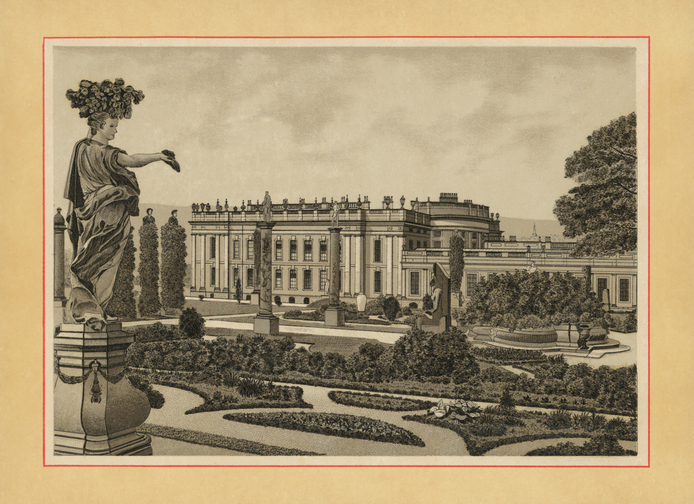
A nineteenth century etching of Chatsworth House (Credit: powerofforever via Getty Images)
Chatsworth House, set in the heart of the Peak District in between the towns of Bakewell and Chesterfield, is one of the grandest stately homes in Derbyshire, and is sometimes called the most famous mansion in England.
The seat of the Cavendish family since the sixteenth century, (titled the Dukes of Devonshire from 1694), the estate was bought in 1549 by Sir William Cavendish and his wife, Elizabeth Talbot, better known as Bess of Hardwick. In the early 1550s she began overseeing the building of the very first house on the site, and over the next three centuries, Chatsworth grew in grandeur through successive generations of the Cavendish family, including the addition of formal gardens by Capability Brown in the eighteenth century and later, Joseph Paxton.
Esteemed visitors to Chatsworth have included Queen Victoria, Charles Dickens, King Charles I of Portugal and, for a short while in the 1570s, Mary, Queen of Scots who was held in custody there.
Chatsworth House remains one of the most opulent historic houses to visit in Derbyshire – a world-class attraction that showcases treasures spanning millennia. Within its grand rooms and galleries, visitors can admire ancient sculptures from Egypt and Rome, masterpieces by Rembrandt, Sir Joshua Reynolds, and Lucian Freud, exquisite Elizabethan embroidery, Enlightenment-era scientific instruments, and a remarkable library of rare books and historic manuscripts.
Haddon Hall

Haddon Hall in the beautiful River Wye valley (Credit: mikedabell via Getty Images)
Set in the picturesque River Wye valley near the market town of Bakewell, Haddon Hall is not only one of the most enchanting stately homes in Derbyshire, it’s one of the oldest houses in England. Once called ‘the most perfect house to survive from the Middle Ages’, the manor’s origins stretch back to the eleventh century, evolving through Norman, medieval, Tudor, and Elizabethan phases to become a remarkably well-preserved time capsule of English heritage.
The Vernon family shaped much of the house’s medieval and Tudor character, with highlights including the Medieval Banqueting Hall complete with its original dais table, and a tapestry gifted by King Henry VIII. The house is famed for its breathtaking Tudor painted ceilings, exquisite heraldic panelling, and rare fifteenth century frescoes in the chapel. The grand thirty-three metre Long Gallery, built in the sixteenth century, is often considered one of the most beautiful rooms in England. Uniquely, Haddon Hall was largely left untouched – save for minor alterations and maintenance – for almost two centuries after the family moved to Belvoir Castle in the 1700s, allowing the house to avoid the sweeping changes of later eras.
Today, Haddon Hall is one of the most beautiful historic houses to visit in Derbyshire, and is a magnet for visitors seeking an authentic step back in time.
Hardwick Hall
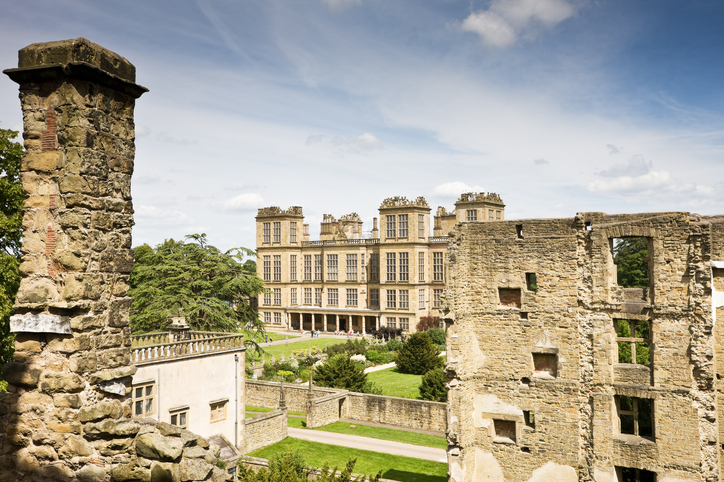
Hardwick Hall, more glass than wall (Credit: stevegeer via Getty Images)
Sitting pretty on a hilltop between Chesterfield and Mansfield is Hardwick Hall, one of the great Elizabethan-era prodigy houses. A prodigy house is a mansion of such spectacular grandeur they were specifically designed to attract the attention of the reigning monarch. Hardwick, built between 1590 and 1597 by visionary English architect Robert Smythson, isn’t just one of the best historic houses in Derbyshire, it’s one of the most impressive in the whole country. Smythson built the house for the formidable Elizabeth Cavendish, wife of Sir William Cavendish.
It was an incredibly bold statement of wealth and ambition, fusing Renaissance elegance with state-of-the-art Elizabethan innovation. It quickly became famous for its daring architecture, featuring vast windows in a style celebrated as ‘more glass than wall.’ The interiors were lavishly furnished with a treasure trove of tapestries, embroideries, grand portraits, and rare sixteenthth-century furniture – much of which can still be admired today. Bess filled her home with opulence and light, making Hardwick a beacon of luxury, culture, and impressive hospitality at the close of the Tudor age.
One of the finest stately homes to visit in Derbyshire, Hardwick Hall remained with the Cavendish family – who became the Dukes of Devonshire – for over four centuries until it was gifted to the nation in the late 1950s.
Kedleston Hall

The lavish facade of Kedleston Hall (Credit: TerryJLawrence via Getty Images)
Called a ‘temple to the arts’, Kedleston Hall was commissioned in the 1750s by Sir Nathaniel Curzon (later 1st Baron Scarsdale), and designed by pre-eminent Scottish architect Robert Adam, whose creative vision set new standards for grandeur, classical beauty, and entertaining on a lavish scale. One of the most awe-inspiring stately homes to visit in Derbyshire, the Curzon family, who were descendents of Norman settlers, wanted the new hall to rival the finest country houses in England, and Adam’s staggeringly opulent Neoclassical interiors, combined with the grandiose Palladian exterior, are extravagantly beautiful.
The Grade I-listed house is a spectacular showcase for paintings, sculpture, gilt furniture and original decorations, reflecting both the family’s passion for art and their fascination with Ancient Greece and Rome. The public rooms, designed less for daily living than for astounding guests with luxury and classical style, are among the best-preserved examples of eighteenth century craftsmanship in Britain. One of the most ambitious historic houses in Derbyshire, it was taken over by the National Trust in the 1980s.
Sudbury Hall
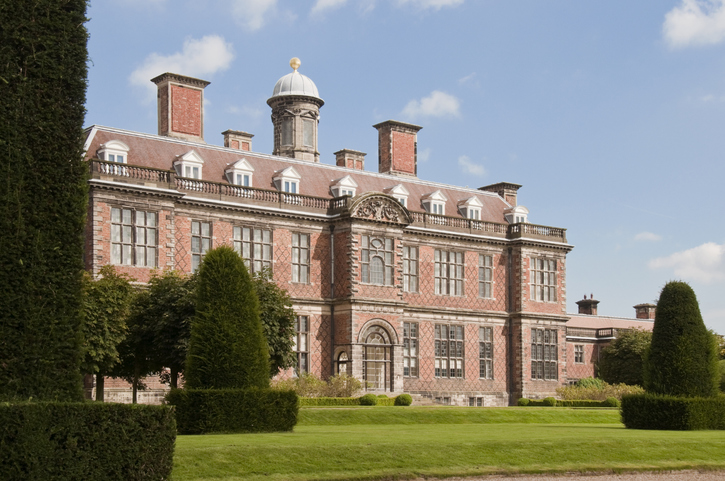
Sudbury Hall, a Restoration-era masterpiece (Credit: FGM via Getty Images)
Just south of Ashbourne in the peaceful village of Sudbury is Sudbury Hall, one of the most glorious historic houses in Derbyshire and widely considered to be one of England’s finest Restoration-era country mansions. Sudbury was built between 1660 and 1680 for twenty-five year old George Vernon with money from his marriage to heiress Margaret Olney. While he kept incredibly detailed accounts of the money he spent on the house, researchers and historians have yet to find any payments to an architect, and it’s believed he designed the house himself. What he created was a stunning red brick Jacobean mansion with a Tudor-style structure – state rooms to the west of the house, service rooms to the east – and a Baroque entrance porch. The interior, completed in 1691, is equally as mesmerising.
Architectural sculptor Edward Pierce’s Great Staircase is considered to be one of the finest in the country, and sumptuous ceiling paintings by Louis Laguerre, ornate overmantels by Grinling Gibbons (whose work adorns Windsor Castle, St Paul’s Cathedral and Hampton Court Palace), and a fifty-one metre Long Gallery are just some of the highlights that have made Sudbury Hall a rare time capsule of the era’s artistic opulence.
The house stayed in the hands of the Vernon family for centuries, with later generations expanding and modernising the estate. In the twentieth century, Sudbury Hall became home to the National Trust Museum of Childhood, housed in the historic servants’ wing. Today, this Grade I-listed mansion is not only a jewel of the county’s illustrious heritage, it’s one of the most captivating stately homes to visit in Derbyshire.
Calke Abbey

Storm clouds over Calke Abbey (Credit: Rob Atherton via Getty Images)
Near the village of Ticknall, Calke Abbey is one of the most fascinating stately homes in Derbyshire. The estate was originally established as an Augustinian priory, likely by Richard d’Avranches, 2nd Earl of Chester, around 1120, and was later closed by Henry VIII during the Dissolution of the Monasteries in 1538. The estate was bought by the Harpur family in 1622.
In the early 1700s, Sir John Harpur commissioned the imposing Baroque mansion that would become known, somewhat misleadingly, as Calke Abbey – even though it had no religious use – from 1808 onward. For nearly 300 years, the Harpur family owned Calke, filling it with generations’ worth of collections, from rare stuffed animals and shells to an extraordinary collection of Victorian toys and taxidermy. During this time, the house itself remained remarkably unchanged, a time capsule where original paintwork, furniture, and even laundry left to dry are preserved as the National Trust found them in 1985.
Interestingly, the National Trust have left much of the hose in a state of what is known as ‘managed decline’ which deliberately restricts upkeep and allows parts of the house and estate to become gently dilapidated, rather than restoring or modernising them, often to highlight the authentic atmosphere, preserved layers of history, or to make a cultural statement.
Today, Calke Abbey feels like stepping into the past, where faded grandeur and everyday life mingle in the most interesting way. One of the most enchanting historic houses to visit in Derbyshire, it gives an honest and unforgettable glimpse into the quirky world of a family who lived life at their own pace and who left behind stories, treasures, and a truly unique slice of English heritage.

